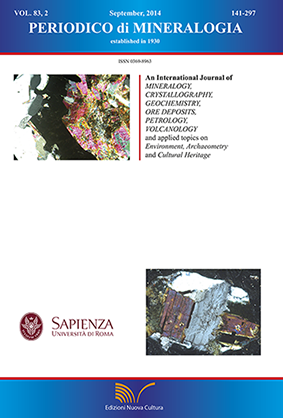Mineralogical Phase Transition on Sandwich-like Structure of Clinky Pottery from Parthian Period, Iran
DOI:
https://doi.org/10.2451/2014PM0010Keywords:
archaeometry, sandwich structure, vitrification, Clinky pottery, Iran,Abstract
Parthian period (250 B.C.-224 A.C.) in the west of Iran is specified by appearance of Clinky pottery. In this study, Clinky pottery was investigated to evaluate the impact of raw materials and firing conditions (temperature and kiln atmosphere) on the sandwich structure of this type of pottery. Samples were mineralogically and chemically characterized with petrography, semi-quantitative X-ray diffraction (XRD), X-ray fluorescence (XRF), and scanning electron microscopy (SEM) analysis.
Hematite and magnetite in the matrix of these samples indicated that firing processe carried out under oxidation - reduction condition. High temperature products such as gehlenite, secondary anorthite, pyroxenes (enstatite-ferroan and diopside-ferroan), and pseudomullite, denote on firing temperature approximately between 950 to 1000°C.
This study shows that kiln atmosphere has changed to reduction in a temperature of about 850 to 950˚C. In reduction conditions, vitrification occurs approximately in 50°C less than oxidation condition. Consequently, amorphous phase develops in the matrix. Formation of this phase helps to internal reducing and poor diffusion of oxygen to the matrix and therefore, good situation provides for stability of magnetite in dark-gray core. In the final stage of firing (ca. 1000°C), fast but controlled blowing of oxygen has happened. In this condition, iron ions in the vicinity of oxygen have changed to hematite and the color of surface became orange-brown.
It seems that the appellation of this kind of pottery as Clinky (because of clink sound when it is knocked), is related to vitrification and formation of Si-O-Si polymeric structure that is the cause of strength in addition to clink sound.


